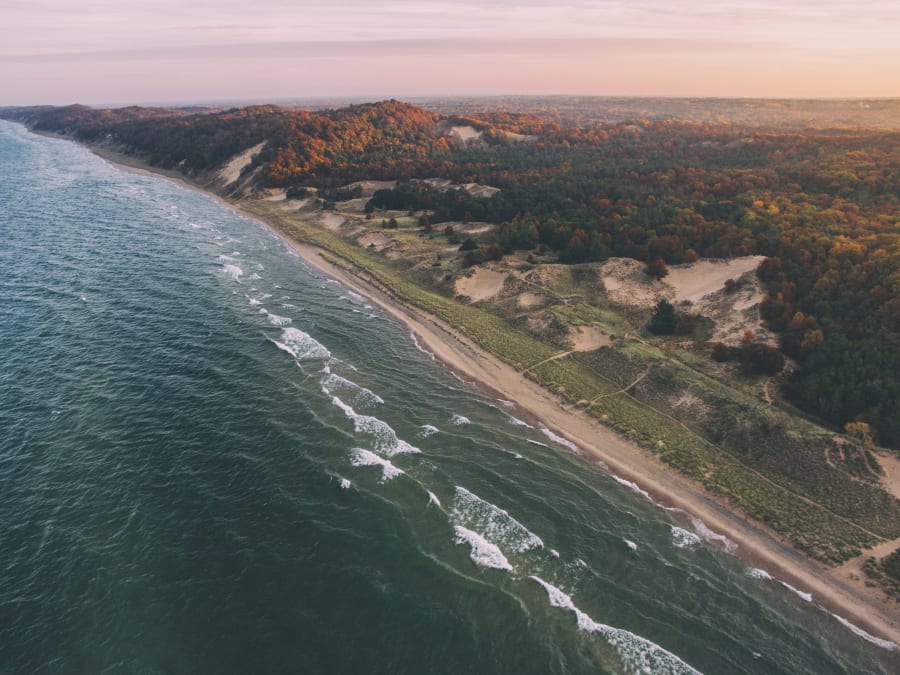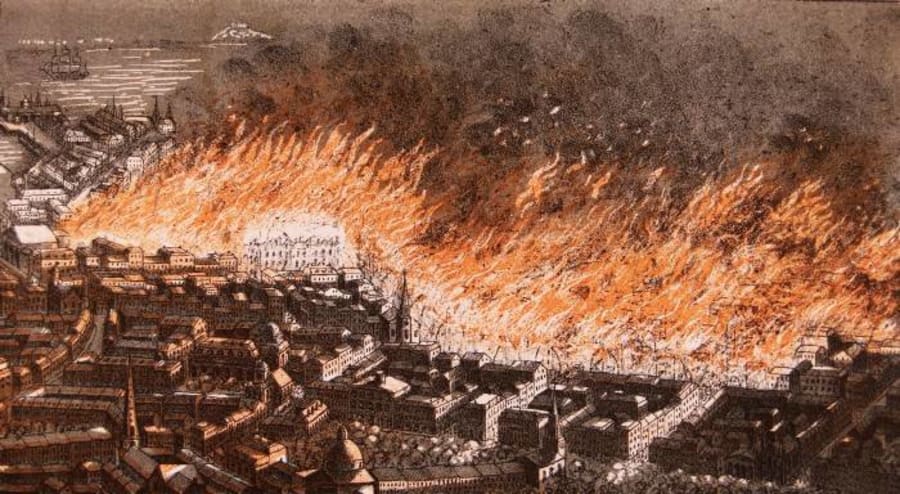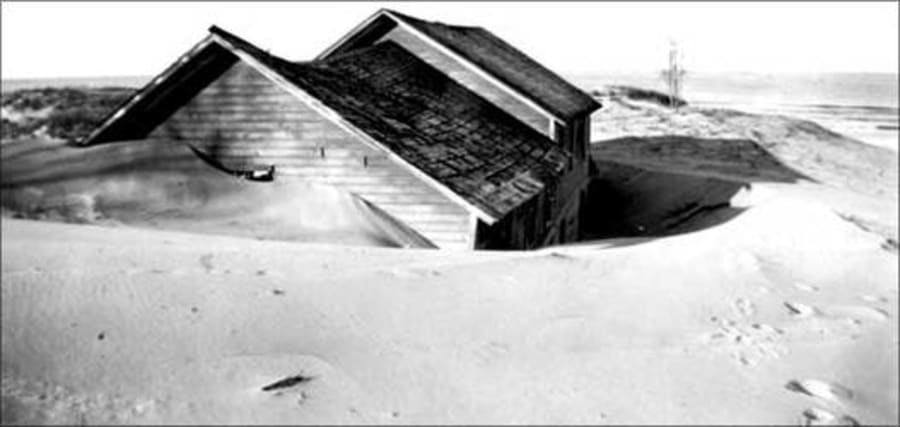DETROIT – Over the course of two days in 1871, wildfires destroyed millions of acres across the Great Lakes region.
The most widely known fire was the Great Chicago Fire, but from Oct. 8 to Oct. 10, fires hit Holland, Alpena, Manistee, Port Huron and Michigan’s Thumb; Windsor, Ontario; Urbana, Illinois; and Peshtigo, Wisconsin.
Recommended Videos
Despite being largely forgotten, the Peshtigo Fire remains the deadliest fire in recorded history. It killed about 2,000 people over 1.2 million acres of land in Wisconsin and the Upper Peninsula.
All of those cities hit by fires were rebuilt and still exist to this day, 150 years later. However, there was one Michigan city that didn’t burn and yet was still wiped off the map because of the fires.
The Michigan Connection is a new feature on ClickOnDetroit that covers the sometimes strange ways the Great Lakes State has helped shape the world.
The Michigan Connection: The town that (accidentally) sacrificed itself for Chicago

Oshea Wilder was born in Massachusetts in 1784. He later would come to Michigan, where he worked as a land surveyor in Calhoun County.
In 1831, he assisted in the founding of Marshall. Three years later, he was appointed by Michigan Territory governor Stevens T. Mason to a committee to find Allegan County’s county seat.
Wilder was well-connected in Michigan, knew how cities and towns worked and he felt it was his turn to put one together.
In 1836, Wilder purchased a 100-acre plot of land on Lake Michigan. Backed by the Lancaster Bank of Massachusetts, he established Singapore, Michigan.
Wilder was hoping Singapore would be a large shipping hub that could rival Chicago and Milwaukee. It had its own struggles, from bank-scandals to a 40-day blizzard that could have destroyed the city in 1842. The citizens of Singapore might have starved to death if it wasn’t for a nearby shipwreck.
Fate had a much more heroic death for Singapore.
The city became a successful lumber town and experienced significant growth. Lake Michigan’s first three-masted schooner, the Octavia, was built in Singapore to carry lumber across the Great Lakes.
But all good things come to an end. On Oct. 8, 1871, after a long period of hot, dry and windy conditions, fires broke out across the Great lakes. Thousands of people were killed, hundreds of thousands of buildings were destroyed and hundreds of thousands of people were left homeless.
If there’s one thing Midwesterners are known for, it’s helping others even when it’s inconvenient, letting them know it’s inconvenient and a fondness for Ranch dressing.

More: When fire ravaged Michigan’s Thumb region: ‘A demon in the gale’
Singapore was untouched by the fires and the city went into overtime. Its population worked to provide lumber to its rival ports because helping people is what we do.
The city helped too much and the area around Singapore was almost completely deforested. The nearby dunes had been stabilized due to the trees and other plant life that no longer existed. Without tree cover, the winds and sand that came off Lake Michigan went after Singapore like it had a vendetta.

Over several years, the sand dunes immigrated inland, burying the city. Many residents moved south to Saugatuck. Eventually, what buildings that weren’t demolished or scavenged were completely buried beneath the sands along Lake Michigan and the Kalamazoo River.
An urban legend in the area recalls a resident who refused to leave his three-story home. He reportedly moved to the next floor as the sand kept rising, eventually leaving his home through a third-story window when sand started entering the home through the chimney.
In 1906, officials dug a new channel for the Kalamazoo River and found cottages and buildings partially buried during construction.
To this day, the dunes on the north side of the Kalamazoo River can be strangely shaped and it’s unknown which dunes could be hiding buildings under its sand.
The city is honored by a Michigan Historic Site plaque in Saugatuck along the Kalamazoo River. It doesn’t reference the cities that were able to stay alive, which is a little passive aggressive (oh, that’s another Midwesterner thing too!).
“Beneath the sands near the mouth of the Kalamazoo River lies the site of Singapore, one of Michigan’s most famous ghost towns. Founded in the 1830′s by New York land speculators, who hoped it would rival Chicago or Milwaukee as a lake port, Singapore was in fact, until the 1870′s, a busy lumbering town. With three mills, two hotels, several general stores, and a renowned “Wild-cat” bank, it outshone its neighbor to the south, “The Flats,” as Saugatuck was then called.
When the supply of timber was exhausted the mills closed, the once bustling waterfront grew quiet. The people left, most of them settling here in Saugatuck. Gradually, Lake Michigan’s shining sands buried Singapore.”
Michigan Historic Site plaque
We remember the Great Chicago Fire and we remember the anti-Irish and anti-Catholic propaganda about Cate O’Leary’s cow, but we forget about the Peshtigo Fire, despite it still being the world’s most deadly fire on record. The Great Chicago Fire was only one of several fires that started on the same day across the Great Lakes.
Only one city was actually destroyed by the fires, and it didn’t even burn.
Maybe 150 years later, we can finally remember Singapore too.
More: Features




